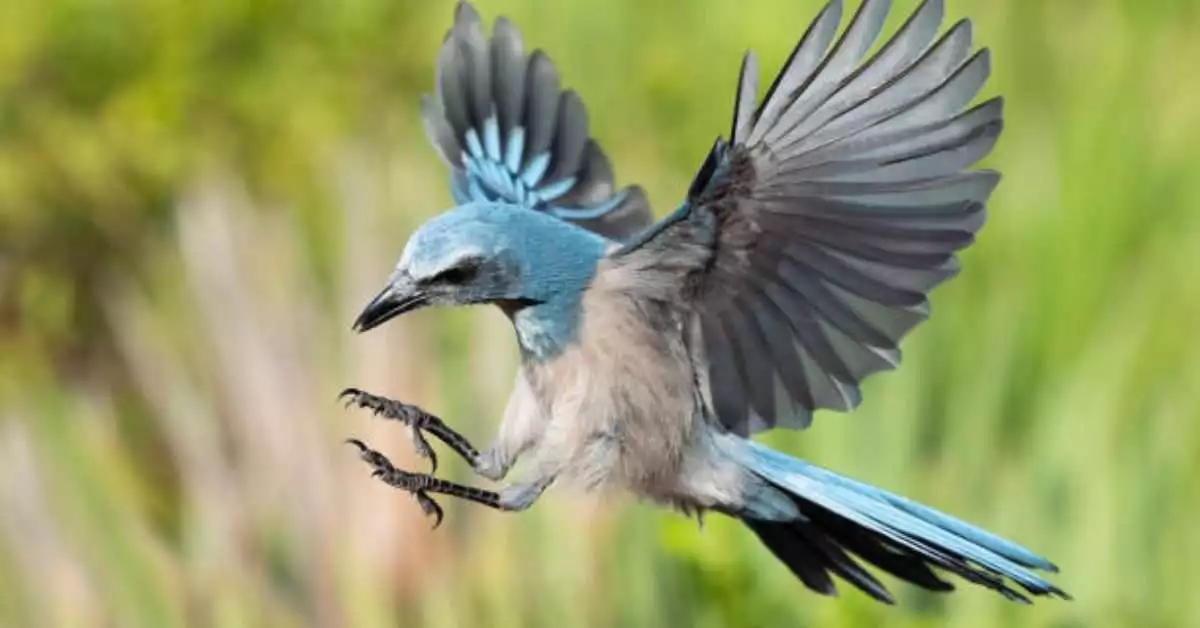
Northwest Florida is home to a variety of bluebirds. From the small and beautiful eastern bluebird to the larger indigo bunting, there is a bluebird for everyone to enjoy.
Get ready to explore the world of bluebirds in Northwest Florida! In this blog post, we’ll introduce you to these beautiful blue-colored bird species found in Northwest Florida.
Blue Birds in Northwest Florida
Learn about the different blue birds in northwest Florida, including the eastern bluebird, Florida scrub-jay, blue grosbeak, indigo bunting, and cerulean warbler. Find out where to spot these beautiful birds and how to attract them to your backyard.
- Eastern Bluebird
- Florida Scrub-jay
- Blue Grosbeak
- Indigo Bunting
- Blue-grey gnatcatcher
- Cerulean Warbler
1. Eastern Bluebird
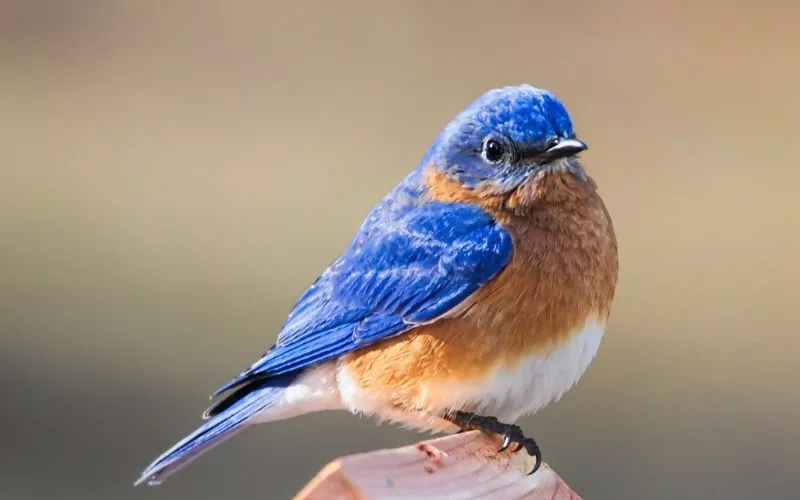
Eastern Bluebirds are small size bright blue birds in Florida. These birds look beautiful with bright blue color. Bluebirds are one of the most common blue birds in Northwest Florida.
These species of bluebirds are mainly found in the north and throughout central Florida.
Eastern Bluebirds prefer open woodlands, meadows, and clearings with scattered trees, as well as suburban areas with suitable habitats.
Bluebirds are cavity nesters. They face huge danger because of habitat loss, and the removal of dead trees, and limbs. These birds can easily nest in artificial nest boxes. But most of the time they prefer open habitats.
They eat insects, other invertebrates, berries, and fruits. They are more commonly seen during the winter months in Florida. Eastern Bluebirds are also known as the dark blue birds in Florida.
To attract Eastern Bluebirds to your property in Florida, provide nesting boxes and offer food like mealworms, suet, and berries. Remember to respect their natural behaviors and habitats when observing them.
Western Bluebirds stay in their habitat all year and don’t migrate. They build nests in holes, like in trees or old woodpecker nests.
2. Florida Scrub-jay
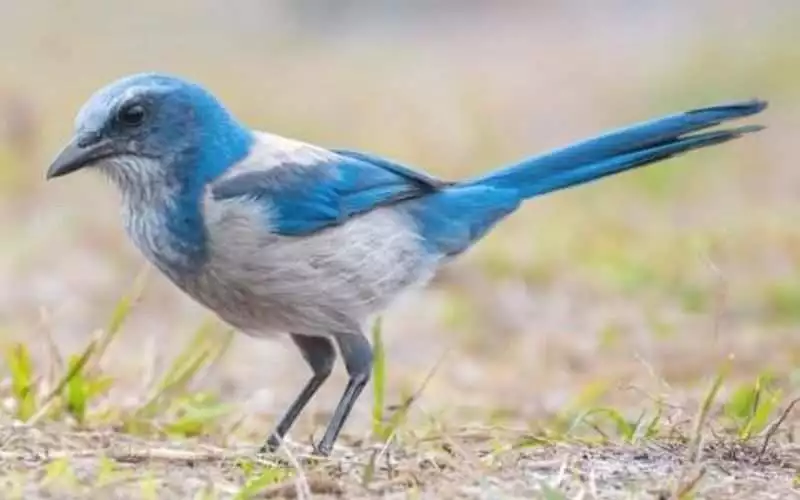
This is a unique blue and grey bird species about the size of a blue jay. Florida scrub jays are found in the scrubby pine forests of northwest Florida. It is known for its vibrant blue plumage.
The Florida scrub jay is mostly found in sandy scrub habitats, including scrub oak, sand pine, and palmetto habitats. Florida scrub jays are the most commonly seen bluebirds in Florida.
It is more commonly seen in the central and southern parts of the state, but they also grew populations in Northwest Florida.
The Florida Scrubjays are social and live in family groups. They eat insects, seeds, fruits, and small vertebrates. These bird species can mimic other bird calls and are also known for their intelligence.
If you are in Northwest Florida and want to spot Florida Scrub-jays, look for areas with scrubby vegetation and sandy soils.
Some locations, such as the Apalachicola National Forest and St. Joseph Peninsula State Park, may offer opportunities to see these birds in their natural habitat.
3. Blue Grosbeak
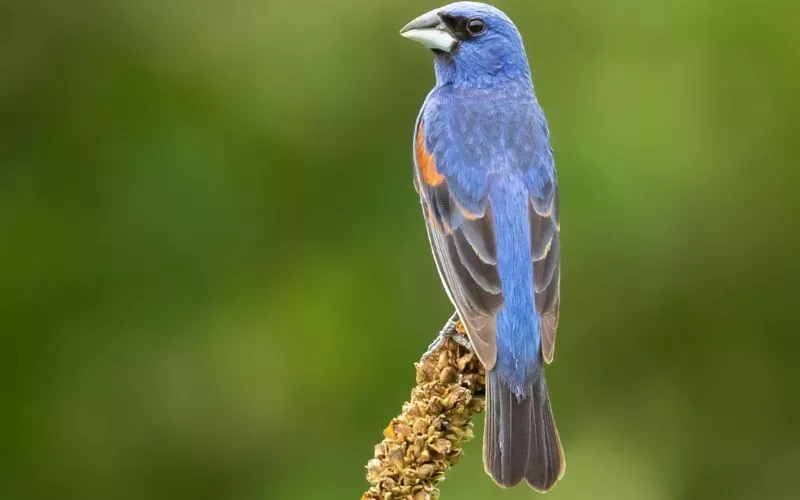
The Blue Grosbeaks are colourful small blue birds in Florida. Blue Grosbeaks can grow up to 8 inches long. There is a bright blue color on their whole body.
These bluebird species have a bright blue head and a bright blue breast and also have a black back and a white belly. Females Blue Grosbeak have brown feathers with a little bit of blue on their wings.
Blue Grosbeak is one of the most common dark blue birds in Florida. Males are more bright blue compared to females, while females are brownish.
Blue grosbeaks prefer open habitats with tall grasses, such as meadows and fields. They eat seeds, insects, and berries. Males sing to defend their territory.
They build nests in shrubs. The female lays 3 to 5 eggs. Both parents take care of the chicks. Blue Grosbeaks bring beauty to Florida with their blue feathers.
4. Indigo Bunting
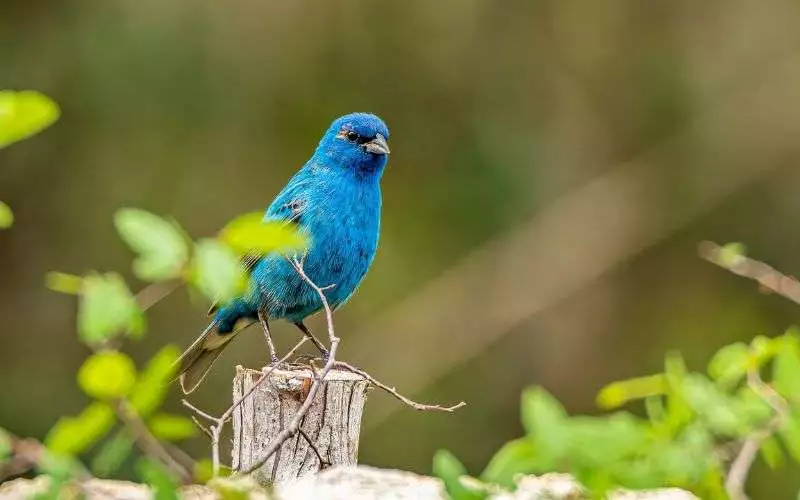
This small bird has a bright blue head and body, and black wings and tail. Indigo buntings are found in open habitats with scattered trees, such as fields and forest edges.
This small bright blue-coloured bird can be found all over Florida during the spring and summer months, also found in Northwest Florida.
Male Indigo Buntings have purple-blue feathers, while females have bluish-green. They always prefer to stay in open woodlands, brushy fields, and meadows.
They primarily eat seeds, insects, and berries. Indigo Bunting can grow up to 4-5 inches in length with a wingspan of 6-9 inches.
Fun fact: During their breeding, they migrate thousands of miles.
5. Blue-grey gnatcatcher
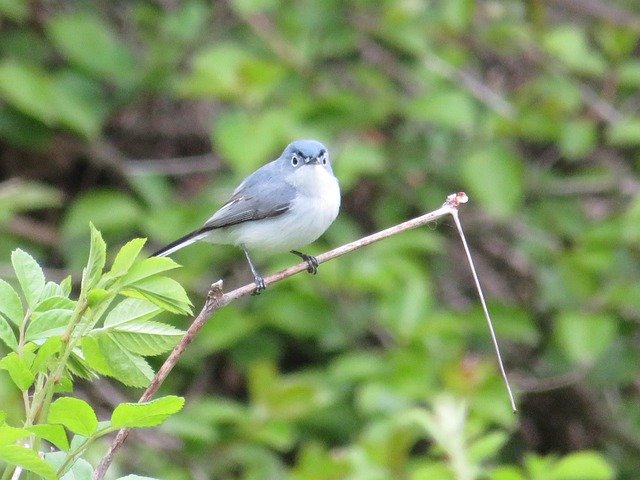
This is a small, grey bird with a blue-grey head and back. Blue-grey gnatcatchers are found in forests and woodlands.
You can see Blue-gray Gnatcatchers in parks, forests, and nature reserves in Northwest Florida. Listen for their high-pitched calls and watch their acrobatic flight as they catch insects.
To spot them, look in areas with lots of plants, especially near water. They’re small and quick, so be patient and observant.
Remember to keep your distance and not disturb their nests or homes. Enjoy watching these active and beautiful birds in their natural behavior.
6. Cerulean Warbler

This is a small warbler bird with a bright blue head and back, and a white belly. Cerulean warblers prefer open woodlands with a good understory of shrubs and vines.
Females and young birds have greyer or greenish feathers and a pale stripe over the eye. They all have wing bars and a thin, pointed bill.
Males have a bold blue back, while females have a greyer back. Cerulean Warblers primarily eat insects.
They can grow up to 4-5 inches just like Painted Bunting blue birds with a wingspan of 6-8 inches.
People Also Ask (FAQ):
1. What are the most common blue birds in northwest Florida?
The Eastern bluebirds are the most common in northwest Florida. Other common bluebirds include the Florida scrub-jay, blue grosbeak, indigo bunting, and cerulean warbler.
2. Where can I find bluebirds in northwest Florida?
Bluebirds are found in a variety of habitats in northwest Florida, including open woodlands, meadows, fields, and farms. They are especially attracted to areas with scattered trees and shrubs.
3. How can I attract bluebirds to my backyard?
To attract bluebirds to your backyard, follow these simple steps:
Offer food and water: Set up a bird feeder and birdbath.
Plant native plants: Choose ones that provide food and shelter for bluebirds.
Avoid chemicals: Keep your yard pesticide and herbicide-free.
Conclusion
Bluebirds bring joy with their vibrant colors, and in northwest Florida, you have the perfect chance to see them. With diverse habitats and plenty of food, this region is home to many types of bluebirds. Keep an eye out for these stunning creatures next time you’re enjoying nature in northwest Florida.


